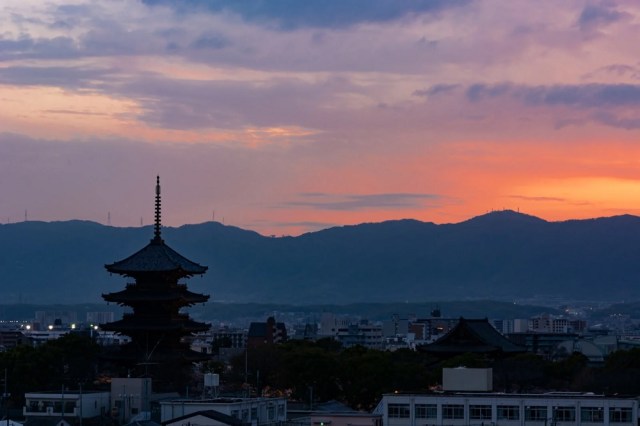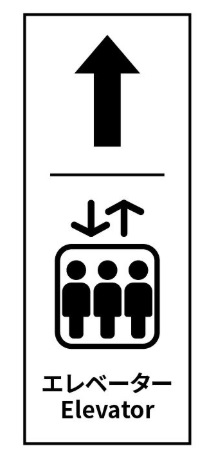
Kyoto City Tourism Association wants the town to clean up its translation act.
Kyoto has always been among Japan’s top tourism destinations, and with Japan receiving more foreign travelers than it ever has before, the same goes for its former capital. But with record-breaking numbers of overseas visitors coming into Kyoto, there’s an increased need for multilingual guidance signage and guidance, and a recent study has found less-then-stellar quality to the translations being provided to Kyoto’s guests from abroad.
Between December and February, the Kyoto City Tourism Association investigated non-Japanese signs, written notices, and audio announcements at 50 locations within the city, including train stations, hotels, restaurants, museums, temples, and shrines. Out of roughly 3,600 items examined, 499 were found to be incorrectly or inaccurately translated.
A greater than 10-percent chance of foreign travelers not being able to understand the intended messages is too high for the association’s liking. “Coming as inbound international travelers are returning to Kyoto,” said association spokesperson Yuya Iwasaki, “[these mistranslations] could potentially damage the Kyoto brand.”
In response, the association has enacted a number of initiatives, including seminars for tourism and tourism-adjacent businesses on how to more effectively communicate necessary information and rules to visitors who can’t read or speak Japanese. Last month the organization also released a 49-page Foreign Language Signage Guideline packet, available for free download through the Kyoto City Tourism Association website here. Right off the bat, the guidelines caution against an over-reliance on machine/A.I. translation, giving the following example.
As a direct translation of the Japanese text, “The current time is unavailable” is all right, but it’s still not something that makes much sense in English. In Japanese, it’s common to omit the subject and object of a sentence of clause if it can be understood from context, and the Japanese text is really saying “[You] cannot use [this space/thing] at the current time,” so the Kyoto City Tourism Association guideline packet recommends this translation instead.
The all-caps CLOSED might look a little harsh, but the guidelines do later go on to stress the importance of making sure not to strip away the polite tone of in-Japanese text when translating it, recommending the consistent use of words such as “please” and “thank you.”
▼ The association recommends the version on the right
The guidelines also include visual design pointers, such as recommending complementing text with pictograms…
…making sure foreign-language text is adequately sized to be noticeable, and grouping each language’s text together in their own sections of signage.
▼ Recommended versions on right side
It’s worth keeping in mind that though the study that discovered the translation errors was carried out by the Kyoto City Tourism Association, the locations where the errors were found are not necessarily administered by the municipal government. In the post-pandemic travel boom more than a few restaurants, temples, and other places that previously had only limited levels of interest from overseas travelers have suddenly found themselves becoming major tourist draws, and some inaccurate signage was likely put in place with the attitude of “We really need to put up something right away, and we don’t have a translator on staff, so just Google translate it and we’ll sort the details out later.” The study was also not limited to English translations, and the more languages involved, the greater the chance for a translation slip-up.
There is, as always, the argument to be made that it is travelers’ responsibility to study up and acquaint themselves on norms of public behavior and basic phrases in the language of a foreign country that they plan to visit. At the same time, with Japan’s inbound travel boom not likely to cool off anytime soon, and breaches of etiquette by foreign tourists drawing increasing attention and annoyance from the local population, clearer communication itself can only be a good thing, so hopefully the Kyoto City Tourism Association’s efforts will prove effective.
Related: Kyoto City Tourism Association
Source: Yomiuri Shimbun via Livedoor News via Jin, Kyoto City Tourism Association
Top image: Pakutaso
Insert images: Kyoto City Tourism Association
● Want to hear about SoraNews24’s latest articles as soon as they’re published? Follow us on Facebook and Twitter!






 Japanese travelers are avoiding Kyoto as the city’s number of foreign visitors continues to grow
Japanese travelers are avoiding Kyoto as the city’s number of foreign visitors continues to grow Japanese government wants to encourage wealthy foreigners to travel deeper into Japan, NHK says
Japanese government wants to encourage wealthy foreigners to travel deeper into Japan, NHK says Japan to begin accepting tourists from the U.S., three other countries this month
Japan to begin accepting tourists from the U.S., three other countries this month “I’m glad I’m Japanese” posters in Kyoto spark outrage among Japanese Twitter users
“I’m glad I’m Japanese” posters in Kyoto spark outrage among Japanese Twitter users “Do not travel to Japan” U.S. government tells citizens
“Do not travel to Japan” U.S. government tells citizens Studio Ghibli releases new Totoro collection to keep us hydrated all summer long
Studio Ghibli releases new Totoro collection to keep us hydrated all summer long Nintendo unveils new Super Mario travel item merch line just in time for midsummer trips【Photos】
Nintendo unveils new Super Mario travel item merch line just in time for midsummer trips【Photos】 Sorakaze: New Hakone sightseeing cruise boat on Lake Ashi is as stunning as the Mt Fuji views
Sorakaze: New Hakone sightseeing cruise boat on Lake Ashi is as stunning as the Mt Fuji views Headed to the beautiful island under two hours from Tokyo? This sashimi restaurant is the first place you should go
Headed to the beautiful island under two hours from Tokyo? This sashimi restaurant is the first place you should go No-bus Kyoto sightseeing! SoraNews24’s ultimate on-foot guide for Japan’s former capital【Part 1】
No-bus Kyoto sightseeing! SoraNews24’s ultimate on-foot guide for Japan’s former capital【Part 1】 You can be on this beautiful Japanese island in less than two hours from downtown Tokyo
You can be on this beautiful Japanese island in less than two hours from downtown Tokyo Daiso to change Japanese closing-time music because foreign tourists aren’t taking the hint
Daiso to change Japanese closing-time music because foreign tourists aren’t taking the hint Osaka man arrested for trying to rob woman with necktie that says “Police”
Osaka man arrested for trying to rob woman with necktie that says “Police” 5 reasons why foreign tourists should skip Tsukiji and go to a different place in Tokyo instead
5 reasons why foreign tourists should skip Tsukiji and go to a different place in Tokyo instead Tokyo restaurant with neighborhood grannies in the kitchen serves family recipes to one and all
Tokyo restaurant with neighborhood grannies in the kitchen serves family recipes to one and all Pizza Hut made a Cardcaptor Sakura Pizza, and its ingredients are as crazy as its looks
Pizza Hut made a Cardcaptor Sakura Pizza, and its ingredients are as crazy as its looks Four words that mean something very different in east Japan and Kyoto
Four words that mean something very different in east Japan and Kyoto One Piece celebrates 25th anniversary with awesome new Uniqlo T-shirt line tracing series’ history
One Piece celebrates 25th anniversary with awesome new Uniqlo T-shirt line tracing series’ history The method to save a seat in Japan shows how awesomely safe the country is【Video】
The method to save a seat in Japan shows how awesomely safe the country is【Video】 Why is Uniqlo spelled with a Q?
Why is Uniqlo spelled with a Q? Starbucks Japan has a miniature collection, but you’ll need patience to get it
Starbucks Japan has a miniature collection, but you’ll need patience to get it Himakajima: The Japanese island with one traffic light that only turns green once a year
Himakajima: The Japanese island with one traffic light that only turns green once a year Tourist ban now in effect in Kyoto’s Gion geisha district…but are visitors obeying the rules?
Tourist ban now in effect in Kyoto’s Gion geisha district…but are visitors obeying the rules? Starbucks releases an official green tea chai latte with special Japanese ingredients
Starbucks releases an official green tea chai latte with special Japanese ingredients Tourists damage Mt Fuji Lawson blackout screen that was meant to stop bad-mannered visitors
Tourists damage Mt Fuji Lawson blackout screen that was meant to stop bad-mannered visitors Practical Zelda Tears of the Kingdom merch is here to be Hyrule-helpful in your daily life【Pics】
Practical Zelda Tears of the Kingdom merch is here to be Hyrule-helpful in your daily life【Pics】 Studio Ghibli Uniqlo shirts and bags on sale now, but not in Japan【Photos】
Studio Ghibli Uniqlo shirts and bags on sale now, but not in Japan【Photos】 Japanese department store rooftop is a secret oasis where you can escape the crowds in Tokyo
Japanese department store rooftop is a secret oasis where you can escape the crowds in Tokyo New Hello Kitty and friends summer kimono are perfect for Sanrio-loving parents, kids, and sisters
New Hello Kitty and friends summer kimono are perfect for Sanrio-loving parents, kids, and sisters McDonald’s new Happy Meals offer up cute and practical Sanrio lifestyle goods
McDonald’s new Happy Meals offer up cute and practical Sanrio lifestyle goods Sales of Japan’s most convenient train ticket/shopping payment cards suspended indefinitely
Sales of Japan’s most convenient train ticket/shopping payment cards suspended indefinitely Sold-out Studio Ghibli desktop humidifiers are back so Totoro can help you through the dry season
Sold-out Studio Ghibli desktop humidifiers are back so Totoro can help you through the dry season Japanese government to make first change to romanization spelling rules since the 1950s
Japanese government to make first change to romanization spelling rules since the 1950s Foreigner’s request for help in Tokyo makes us sad for the state of society
Foreigner’s request for help in Tokyo makes us sad for the state of society Ghibli founders Toshio Suzuki and Hayao Miyazaki contribute to Japanese whisky Totoro label design
Ghibli founders Toshio Suzuki and Hayao Miyazaki contribute to Japanese whisky Totoro label design Tokyo’s most famous Starbucks is closed
Tokyo’s most famous Starbucks is closed Doraemon found buried at sea as scene from 1993 anime becomes real life【Photos】
Doraemon found buried at sea as scene from 1993 anime becomes real life【Photos】 One Piece characters’ nationalities revealed, but fans have mixed opinions
One Piece characters’ nationalities revealed, but fans have mixed opinions Life-size vibrating Legend of Zelda Master Sword for sale from Nintendo【Photos】
Life-size vibrating Legend of Zelda Master Sword for sale from Nintendo【Photos】 Japanese prefectural governor wants foreign tourists to pay special extra fee
Japanese prefectural governor wants foreign tourists to pay special extra fee One thing NOT to do in Kyoto if you’re headed there during the vacation period
One thing NOT to do in Kyoto if you’re headed there during the vacation period Kyoto bans tourists from geisha alleys in Gion, with fines for those who don’t follow rules
Kyoto bans tourists from geisha alleys in Gion, with fines for those who don’t follow rules The country that sent the most foreign visitors to Japan in 2013 was…
The country that sent the most foreign visitors to Japan in 2013 was… What’s the top country people want to visit after the pandemic? Japan, survey says
What’s the top country people want to visit after the pandemic? Japan, survey says Kyoto wants to add extra charges for tourists to use city buses
Kyoto wants to add extra charges for tourists to use city buses Kyoto accidentally calls all old people “terrible drivers”【Why Does Engrish Happen in Japan?】
Kyoto accidentally calls all old people “terrible drivers”【Why Does Engrish Happen in Japan?】 Japanese ninja proficiency test to be held in Tokyo
Japanese ninja proficiency test to be held in Tokyo Tokyo’s famous Lost in Translation hotel is closed
Tokyo’s famous Lost in Translation hotel is closed “Foreign travelers are Japan’s guests” – Governor against charging tourists more than locals
“Foreign travelers are Japan’s guests” – Governor against charging tourists more than locals Okinawa pub posts “Japanese only” admission sign based on some shaky logic
Okinawa pub posts “Japanese only” admission sign based on some shaky logic Huge price hike for Japan Rail Pass triggers huge drop in foreign travelers who’ll buy it【Survey】
Huge price hike for Japan Rail Pass triggers huge drop in foreign travelers who’ll buy it【Survey】 Japanese tourism poster with elderly man saying phrase for “I’ll have sex with you” puzzles Japan
Japanese tourism poster with elderly man saying phrase for “I’ll have sex with you” puzzles Japan Kyoto tourist crowds disappearing due to coronavirus outbreak, creating travel crisis/opportunity
Kyoto tourist crowds disappearing due to coronavirus outbreak, creating travel crisis/opportunity Why is Japan such an unpopular tourist destination?
Why is Japan such an unpopular tourist destination? Breathtakingly beautiful beach in often-overlooked part of Japan is like a scene out of Your Name
Breathtakingly beautiful beach in often-overlooked part of Japan is like a scene out of Your Name
Leave a Reply